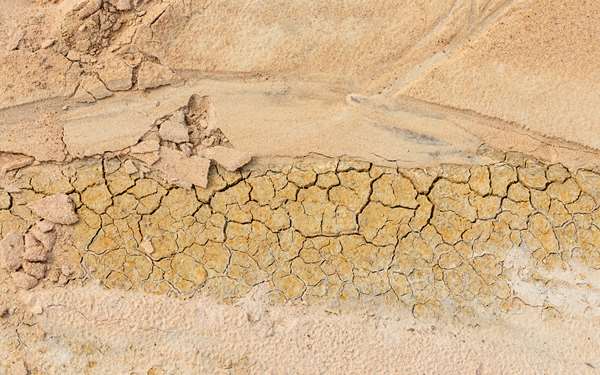
A solution to water scarcity
Find out how Tree Aid is working with communities to conserve water in the drylands of Africa.Why is there a lack of water?
In the Sahel region of Africa, rain only falls for three months of the year. But the effects of the climate crisis mean that rainfall is becoming even more unpredictable. When rain does arrive, it falls on dry ground that hasn’t seen rain for nine months. By this time, the soil has dried out and formed a near-impenetrable hard crust. The land struggles to absorb rainfall and the water simply runs off or evaporates in the extreme heat.
This means that during much of the year, many of the communities we work with struggle to find enough water for drinking, cooking, and washing and to grow trees and crops.


How is Tree Aid helping?
We work to equip people with the tools and training they need to conserve water that falls in the short rainy season for use all year round. Some of these water-conserving techniques include half-moons and zai pits — holes in the soil that trap water and nutrients — and stone bunding — barriers to prevent water from running off the land.
In Ghana, we are working with communities to grow trees and restore the land around the Daka river, helping to re-establish it as a vital source of water. The trees we plant will stabilise the land, prevent soil from being washed away in floods, and help keep it fertile.

Bigger and bolder solutions
We are working with farmers to implement even bigger and better solutions by building water-conserving ‘boulis’. Boulis are deep and large pits, roughly 30m wide and 3m deep, that catch water that falls in the rainy season. By assessing exactly where the rainfall water is collecting and understanding its natural flow, we can choose the perfect site to build these boulis.
Each of these water-conserving pits will hold an average of 2,500m3 of water — that’s roughly the same amount of water as an Olympic swimming pool! This will help provide communities with access to water all year round, despite limited rainfall and high temperatures.


Water for the future
By putting water conservation techniques in place, communities can ensure that they have access to water all year round, helping to keep their land productive and healthy.
Over time, as the soil quality around the boulis improves, life begins to thrive and communities can use the surrounding land to grow crops as a source of nutritious food all year round. Planting an outer ring of trees around each bouli improves the environment even more and has the added benefit of sheltering the crops growing within from the wind. Not only is water conserved for the community to use, but the whole surrounding environment is transformed.
That's water - what about fire?
Wildfires are common in the drylands region where we work. Water conservation methods and tree planting can help to reduce the risk of widlfires by increasing humidity. But how do you tackle wildfires in water-stressed regions without using up all of the water supplies?
Read our blog to learn how we're training communities in fire-prevention methods to reduce the risk of wildfires.







